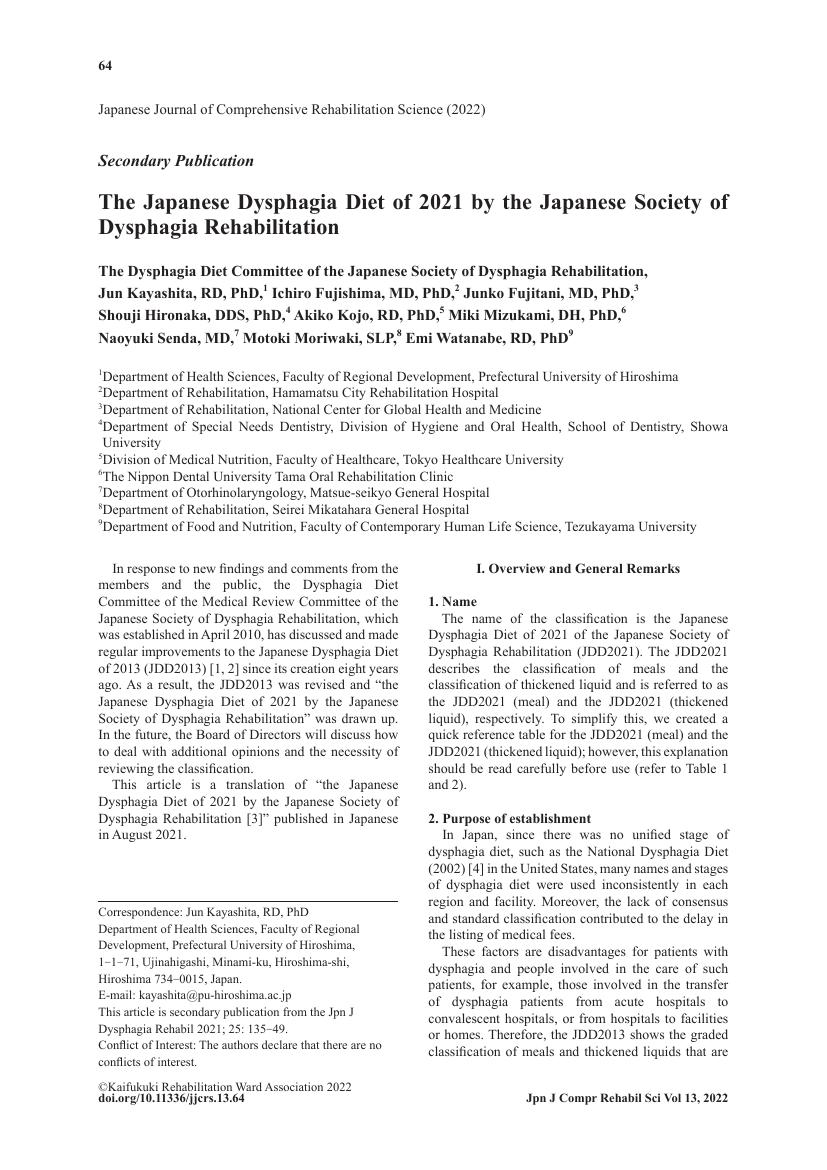- 著者
- Mami Hirasaki Daisuke Takagi Yoshiko Umeda Motoki Moriwaki Norimasa Katagiri Akiko Nomoto Tomohisa Ohno Ichiro Fujishima
- 出版者
- The Japanese Association of Rehabilitation Medicine
- 雑誌
- Progress in Rehabilitation Medicine (ISSN:24321354)
- 巻号頁・発行日
- vol.8, pp.20230006, 2023 (Released:2023-03-01)
- 参考文献数
- 20
Background: Palatal augmentation prosthesis (PAP) and palatal lift prosthesis (PLP) have been used to improve dysphagia and dysarthria. However, to date, there are few reports on their combined use. We report a quantitative evaluation of the effectiveness of a flexible-palatal lift/augmentation combination prosthesis (fPL/ACP) based on videofluoroscopic swallowing study (VFSS) and speech intelligibility testing.Case: An 83-year-old woman was admitted to our hospital with a hip fracture. She developed aspiration pneumonia at 1 month after partial hip replacement. Oral motor function tests revealed a motor deficit of the tongue and soft palate. VFSS showed delayed oral transit, nasopharyngeal reflux, and excessive pharyngeal residue. The cause of her dysphagia was assumed to be pre-existing diffuse large B-cell lymphoma and sarcopenia. To improve the dysphagia, an fPL/ACP was fabricated and applied. It improved the patient’s oral and pharyngeal swallowing and speech intelligibility. In addition to prosthetic treatment, rehabilitation and nutritional support allowed her to be discharged.Discussion: The effects of fPL/ACP in the present case were similar to those of flexible-PLP and PAP. f-PLP assists in elevation of the soft palate and improved the nasopharyngeal reflux and hypernasal speech. PAP promotes tongue movement and results in improved oral transit and speech intelligibility. Therefore, fPL/ACP may be effective in patients with motor deficits in both the tongue and soft palate. To maximize the effect of the intraoral prosthesis, a transdisciplinary approach with concurrent swallowing rehabilitation, nutritional support, and physical and occupational therapy is necessary.
- 著者
- Jun Kayashita Ichiro Fujishima Junko Fujitani Shouji Hironaka Akiko Kojo Miki Mizukami Naoyuki Senda Motoki Moriwaki Emi Watanabe
- 出版者
- Kaifukuki Rehabilitation Ward Association
- 雑誌
- Japanese Journal of Comprehensive Rehabilitation Science (ISSN:21855323)
- 巻号頁・発行日
- vol.13, pp.64-77, 2022 (Released:2023-02-28)
- 参考文献数
- 16
- 被引用文献数
- 13
